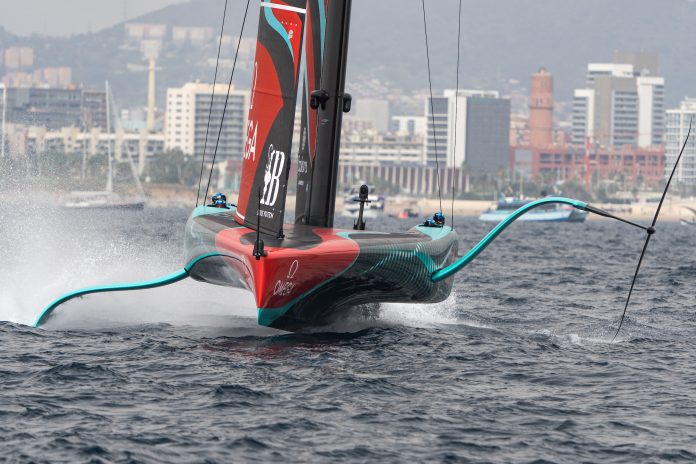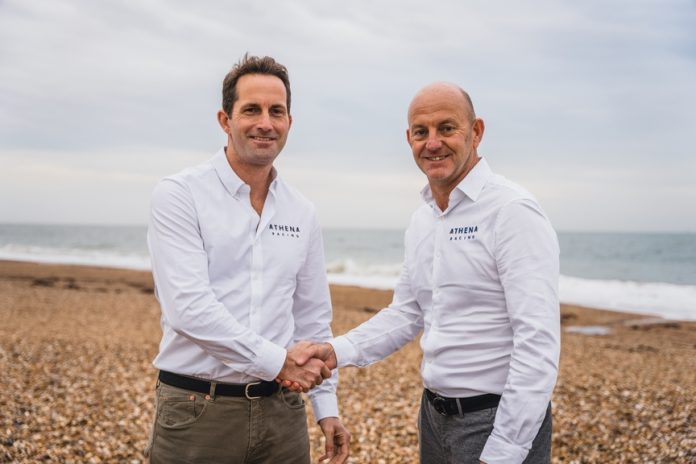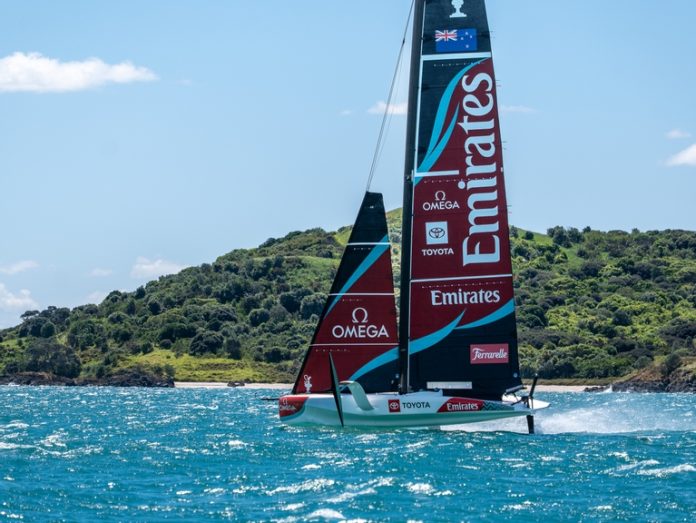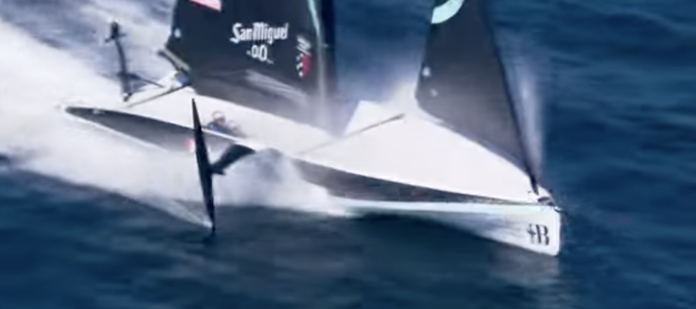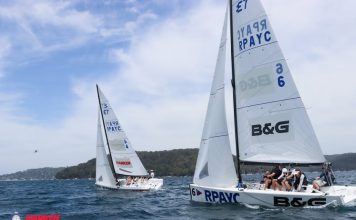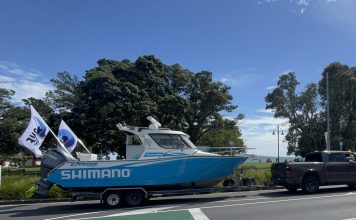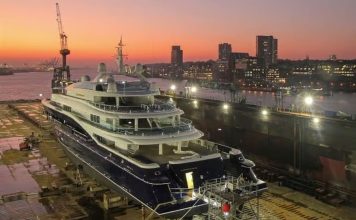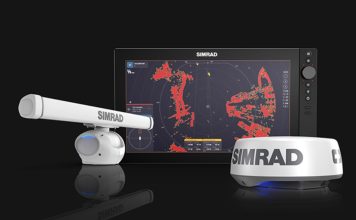A new framework for Naples
With just under two years to go until racing begins in Naples, the governing bodies of the Louis Vuitton 38th America’s Cup have published the definitive AC75 Class Rules and Technical Regulations. Issued on 9 September 2025, these documents set out exactly how teams must prepare their boats — and themselves — for the next edition of sailing’s ultimate prize.
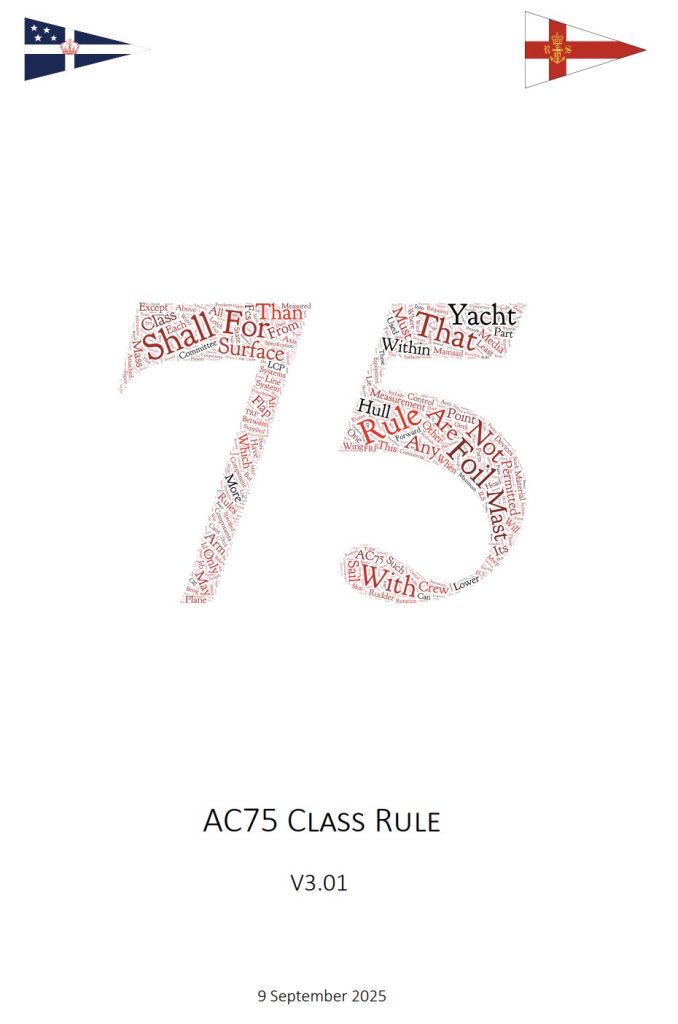
At 105 pages, the Class Rules V3.01 are dense, technical, and uncompromising. But behind the clauses, tolerances, and specifications lies a clear objective: to make the Cup fairer, cheaper, and more sustainable, while ensuring that racing remains spectacular.
The headline changes are stark. Hulls from the last Cup must be reused. Cyclors are gone, replaced by battery-driven systems. Crews are cut to five, with at least one woman on board. And, for the first time since Valencia 2007, a “guest racer” will ride during official races.
For teams, this new framework means revisiting every assumption about design, training, and race strategy.
Re-using the hulls
Perhaps the most dramatic decision is that teams cannot build new AC75 hulls. Instead, they must race boats that were launched in Barcelona (AC37) or even as far back as Auckland in 2021 (AC36).
Rule 9 of the Class Rules lays out exacting requirements for hull geometry and flotation. Blueprints must be submitted as IGES files with reference points and bulkheads precisely defined. Tolerances are unforgiving: no more than ±5mm deviation is allowed on the hull lower, and the overall enclosed volume must be at least 60m³.
The intent is cost containment. As Emirates Team New Zealand’s chief designer Dan Bernasconi explained in the release: “We analysed all of the hull shapes used in Barcelona at AC37 and recognised that the speed differences purely of the hulls were minimal. All of the gains were in foils and systems; therefore it made absolute sense to concentrate design time into those areas of development and re-use the hulls.”
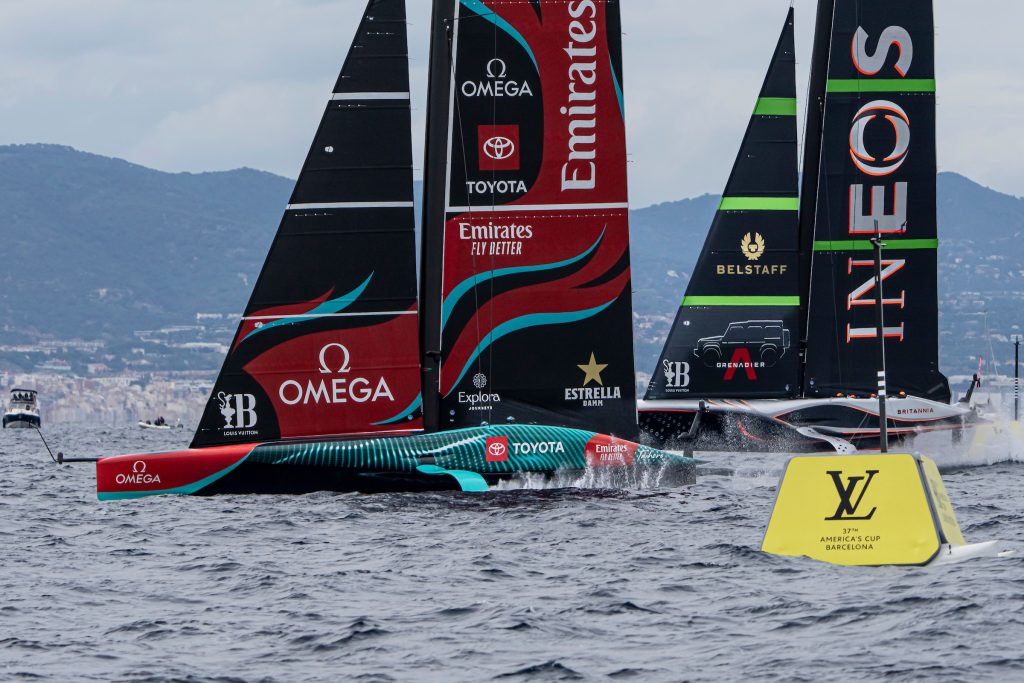
This benefits established syndicates like Team New Zealand, Luna Rossa, and INEOS Britannia, who already have proven hull platforms. For newer challengers, however, it poses a challenge: adapt legacy boats quickly and find gains elsewhere.
Cyclors out, batteries in
If hull reuse is the cost saver, banning cyclors is the cultural shock. The grinders-turned-leg-powered “cyclors” were New Zealand’s innovation in Bermuda 2017 and became an iconic feature of the last two Cups. But under Rule 23 of the new regulations, they are gone.
Instead, all power for moveable systems must come from stored energy — specifically, one-design battery units that will form each boat’s primary bank. These will drive the foil cant system, wing flaps, rudder trim, and sail handling actuators.
For sailors, this is a seismic change. Physical horsepower is no longer the decisive factor; electronic management systems take centre stage. Teams will need fewer elite endurance athletes and more specialists in systems, racecraft, and multitasking. Expect a shift in crew profiles towards lighter, tactically sharp sailors rather than raw powerhouses.
Bernasconi is optimistic: “Another big change will come in the electronic management systems, now that cyclors have been outlawed, but the result will be even closer racing and a sustainable event overall.”
Five sailors, one must be female
Crew size has been reduced to five sailors, but with one significant addition: at least one must be female. Rule 39 of the Class Rules makes this mandatory.
This ensures a direct pathway from the Women’s America’s Cup, run in AC40s, to the senior AC75 squads. It also reflects a broader push for gender integration across high-performance sailing.
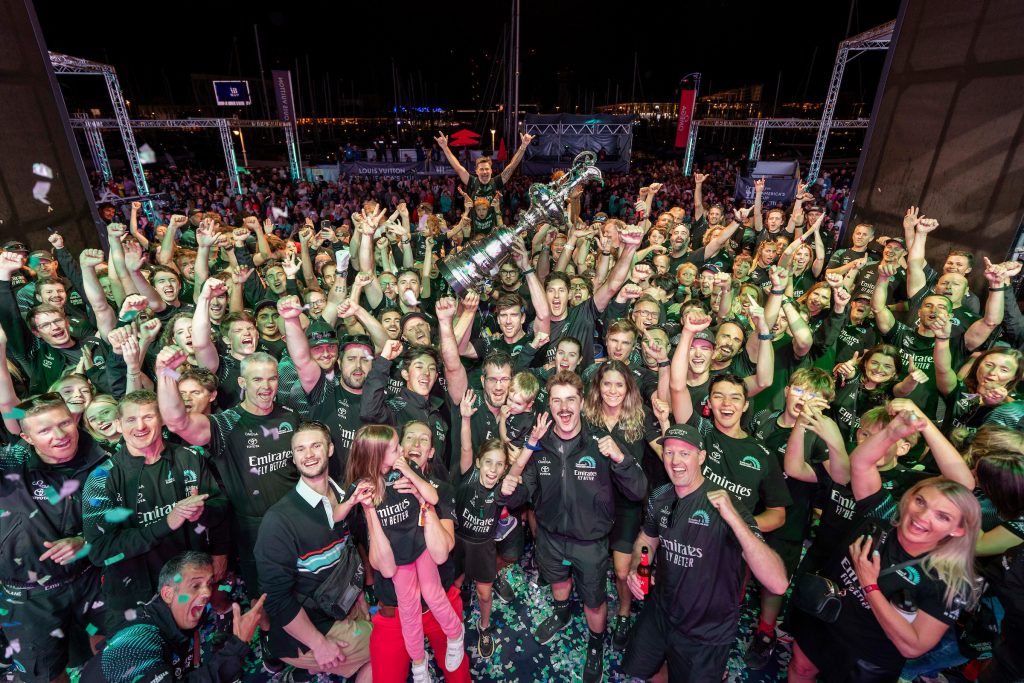
But the rule comes with real consequences. With only five crew slots, every role on board becomes magnified. Communication, coordination, and positional sailing will be critical. Strategy discussions will likely expand beyond a single tactician’s call, involving more active dialogue between helms, trimmers, and flight controllers.
For syndicates, the demand for a deep pool of female sailors creates both opportunity and pressure. Rotation will be inevitable over a multi-year campaign, and programmes must now actively develop female athletes not just for the Women’s Cup, but for the pinnacle itself.
The return of the guest racer
Rule 40 revives a long-dormant tradition: the guest racer. Each AC75 must carry a designated seat for a non-crew guest during racing.
It’s partly a nod to history. The so-called “18th man” was a fixture on IACC yachts in Valencia 2007. But it’s also a media and engagement tool. For fans, sponsors, and VIPs, the chance to ride on a foiling AC75 will be irresistible.
From a technical standpoint, the guest racer has to be accounted for in the yacht’s weight distribution. Rule 6.11 specifies that the guest plus equipment must total no more than 125kg, with ballast added if needed to hit the figure exactly. Teams will need to design cockpits with aerodynamics and safety in mind, without compromising crew efficiency.
It might sound ceremonial, but in a class where tolerances are measured in millimetres, the guest racer’s impact will be real.
Reconnaissance and transparency
One of the most distinctive features of the last Cup cycle returns: the Joint Recon programme.
From 15 January 2026, once AC75s are cleared to sail, each competitor must declare observation days, allowing rivals’ recon crews to document their progress. The aim is to reduce the hidden “spy games” that have long plagued Cup campaigns.
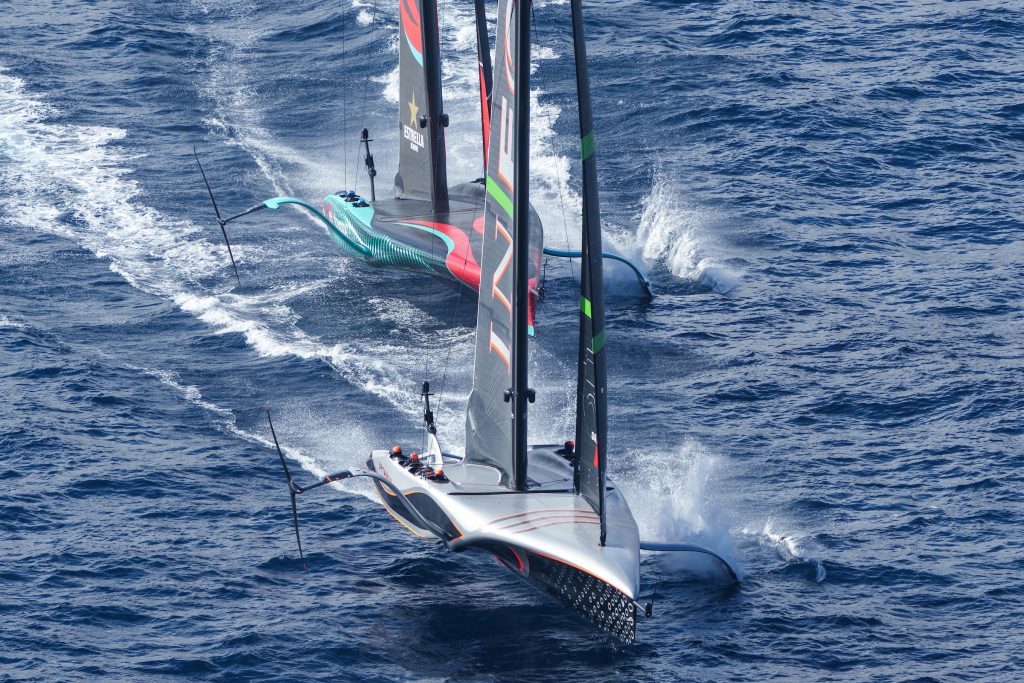
While one-design AC40 training won’t be covered, every AC75 sortie will be subject to scrutiny. Expect a flood of recon reports, photographs, and videos to shape early speculation about form and design choices.
For fans and analysts, it’s a rare window into what would otherwise be the most secretive phase of the campaign.
Materials, foils, and mass control
The Class Rules dedicate entire sections to controlling materials, construction, and component masses. The intention is to narrow the design race to areas that matter most — foils, systems, and crew skill.
Materials (Rule 2): Limits on fibre modulus, core materials, and prohibited substances (e.g. boron, beryllium). Certificates must be supplied for every roll of high-modulus fibre.
Construction (Rule 3): Sustainability requirements are embedded, with incentives for recyclable moulds and life-cycle analysis of hull builds.
Mass (Rule 6): The yacht assembly must weigh 6435kg, with strict sub-component ranges. Each foil wing must fall between 550–580kg, while the jib is fixed at 54kg. Ballast must be adjusted to hit exact values.
These rules leave little room for creative loopholes. Performance margins will come from foil refinement, control systems, and the human element on board.
Sustainability in action
Environmental credibility is no longer optional. The Class Rules include multiple sustainability mandates. Chase boats must be at least 10m long, capable of 35 knots, and powered by batteries, hydrogen, or biofuels.
Hull tooling must meet lifecycle sustainability scores, with recycled or low-energy fibres preferred.
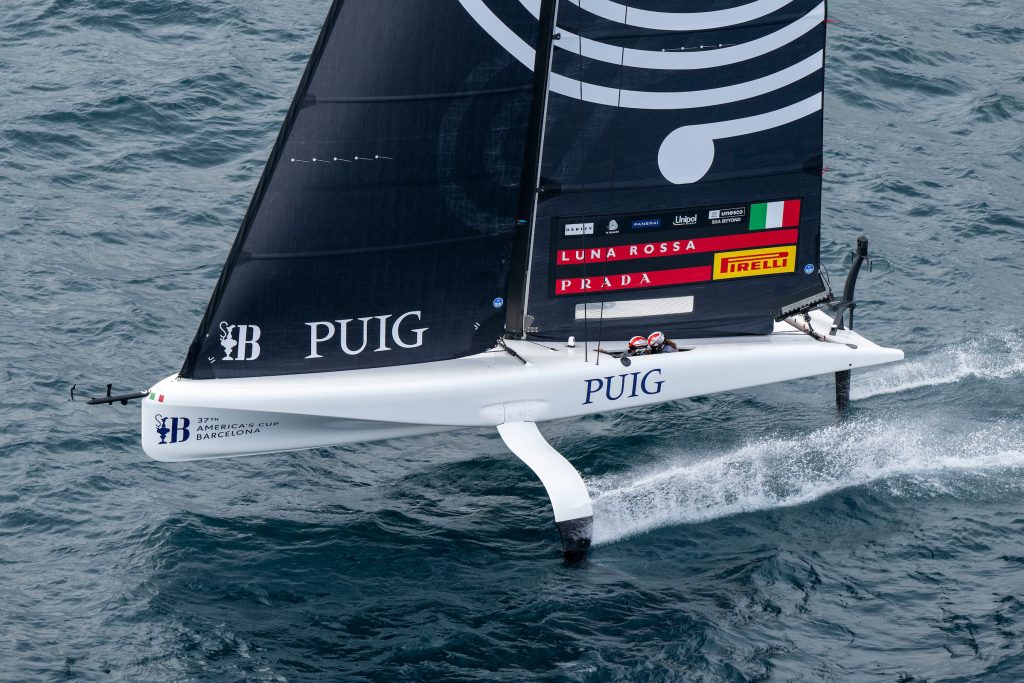
Future-proofing: Teams must cooperate on strengthening sustainability provisions for AC39, including end-of-life disposal and emissions transparency.
For a global event under constant scrutiny, these measures are as much about optics as they are about actual impact. But they do force teams to adapt operations, especially around chase boat fleets.
Training in AC40s
While AC75s are off-limits until early 2026, teams will focus on AC40s. Each syndicate can operate two boats in preliminary regattas, with one crewed by Youth and Women sailors as per the Protocol.
This dual focus ensures development of talent pipelines while giving main squads a racing outlet. For designers, the AC40s serve as testbeds for systems and sail-handling strategies that can be scaled up to the AC75.
What it means for racing
Taken together, these rules mark a significant shift in Cup philosophy.
- Closer racing: Hull differences are neutralised. Foils and racecraft will decide winners.
- Strategic depth: With five crew and batteries replacing grinders, communication and tactical awareness become vital.
- Greater inclusion: Women are no longer on the sidelines; they are integral to Cup crews.
- Public engagement: Guest racers and recon reports connect the Cup more directly to fans.
- Sustainability: From e-chase boats to lifecycle analysis, green initiatives are no longer just for press releases.
The AC75 will look the same to the casual eye: a breathtaking foiling monohull screaming down a course. But inside the cockpits, the dynamics will be utterly different.
Looking ahead
By freezing hull development and outlawing cyclors, the rulemakers have deliberately narrowed the battleground. Teams must now pour resources into foils, control systems, and human integration.
For the defenders, Emirates Team New Zealand, this is familiar territory. They’ve built a reputation for innovation in systems rather than just hull design. For challengers, the focus will be on catching up in areas where Kiwi designers have traditionally excelled.
As Naples 2027 draws nearer, one thing is clear: the 38th America’s Cup will test brains over budgets, teamwork over brute strength, and sustainability over spectacle.
And if the rules deliver on their promise, the racing will be closer than ever.








